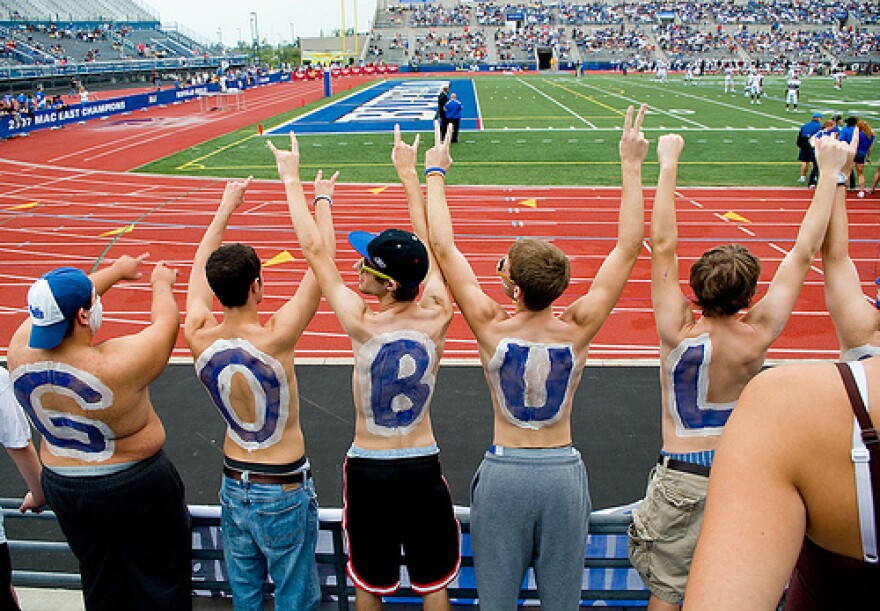Two SUNY schools are still on the hunt for a new head honcho. Binghamton University found out over Friday that its candidates for president of the school have been rejected by SUNY chancellor Nancy Zimpher. But, as Jon Campbell reports at the Press & Sun-Bulletin reports, the two candidates weren't actually candidates:
[Search committee chair Kathryn] Madigan was critical of the timing of the letter's release. She said the two finalists had withdrawn their names from the process at some point before the memo was made public, but declined to say exactly when. "The fact that this memo went out before that announcement could be made did a great disservice to the candidates," Madigan said. "These are candidates that are highly respected in academia, both being actively recruited by top universities, and frankly they deserve better."
Meanwhile, the University at Buffalo is keeping quiet about who might replace president John Simpson, who had originally planned to retire in January (he's sticking around until a replacement is found). Allisa Kline reports at Buffalo Business First that there's "no set timeframe" and no candidates to succeed Simpson:
That's the teeny, tiny bit of information being publicly released right now. Which doesn't amount to very much. The last communication from the UB search committee charged with identifying presidential candidates and presenting those candidates for approval to the UB Council came on Jan. 20 from UB Council chairperson Jeremy Jacobs Sr. The top Delaware North Cos. executive, in a letter to the UB community, said the committee reviewed the qualifications of 68 candidates, met with 10 of those candidates in first-round interviews and then met with "more than half" of the 10 candidates for second-round small group interviews. The small list was comprised of people who serve or have served in positions such as dean, provost, vice president for research and vice president for health sciences, Jacobs said. The "confidentiality of the search process" precluded him from giving more details.
Colleges and the economy
James Goodman at the Democrat and Chronicle has a profile of the contributions of colleges to regional economies in New York. Schools in the Rochester area contributed about $4 billion to the economy in 2009, and host more than 35,000 jobs.
Goodman follows up with a look at the value provided by community colleges, as they offer trade coursework to workers looking to update their skills:
"In robust economic times, businesses tend to invest more in training and so we'll see more sponsored courses. In lean economic times, businesses decrease their training investment and so we'll see more open enrollment courses," [spokeswoman Cynthia] Cooper said. In recent years, enrollment in work force-related programs has been as high as 2,167 in the 2006-2007 school year and as low as 1,428 in 2008-2009.
Albany Law
Robert Gavin writes at the Times Union that Albany Law School is planning to cut back on the number of students it accepts and boost tuition rates, to increase quality:
Even with budget cuts Albany Law will lose revenue with fewer students paying tuition, said Thomas F. Guernsey, president and dean of the school for the last nine years. He is leaving the school June 30. "It's always been sort of the vision of the place, since I've been here, that we don't want it any bigger than it has to be," said Guernsey, "because we know the smaller it is, the higher quality program that we're going to be able to provide." Guernsey said having students with higher grade point averages and law school admission test scores means more graduates will pass the bar exam, while fewer resources will need to be expended on students who need help.
Affirmative action
Rochester Institute of Technology professor Amitrajeet Batabyal writes in an opinion piece at the Buffalo News that socioeconomic status should be considered when seeking diversity at colleges and universities:
Admissions officials frequently say that they do, in fact, embrace a dynamic notion of academic merit. This notwithstanding, our elite institutions are not renowned for being bastions of economic diversity. In this regard, a comprehensive 2004 Century Foundation study found that at the most selective 146 institutions in our nation, students in the highest socioeconomic quartile made up 74 percent of the population and those from the bottom quartile made up just 3 percent of the population. At a time when our elite educational institutions are frequently beyond the reach of most poor and working-class families, we should consider the value of economic diversity in our universities. Such diversity not only keeps alive the cherished American ideal of “equal opportunity” but, over time, it will also ensure that the gap between the “haves” and the “have nots” in our society does not continue to widen.
Want more news from the Innovation Trail? Subscribe to the feed.






